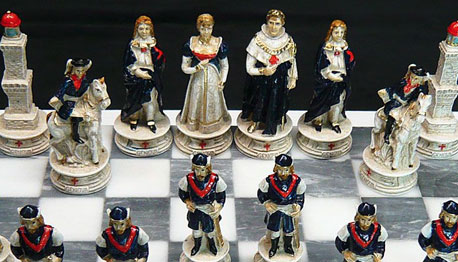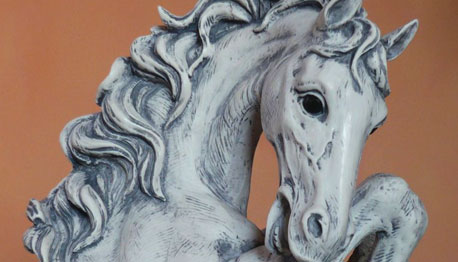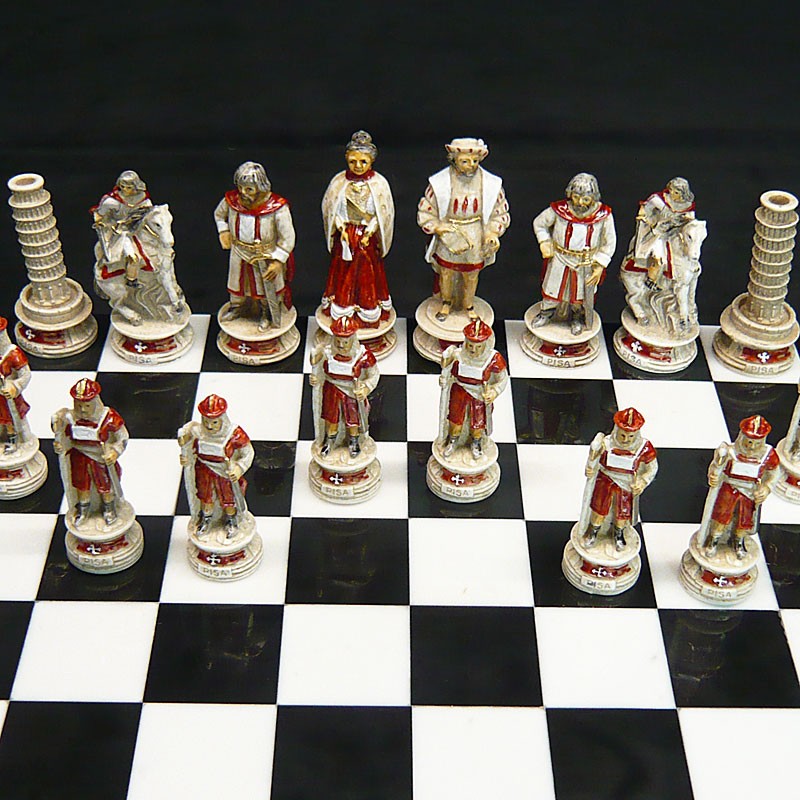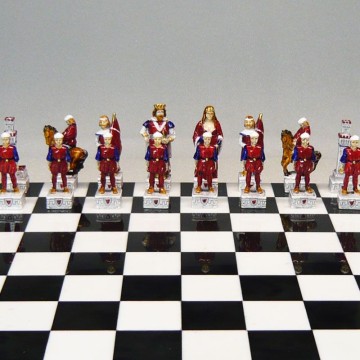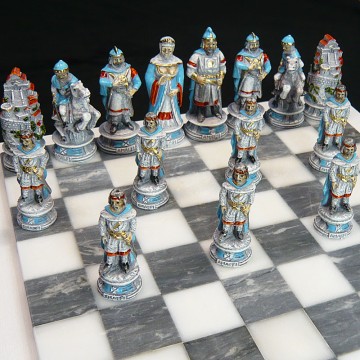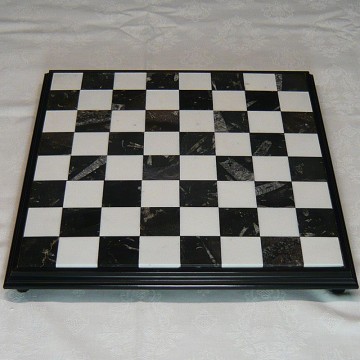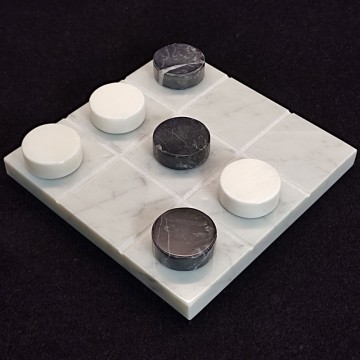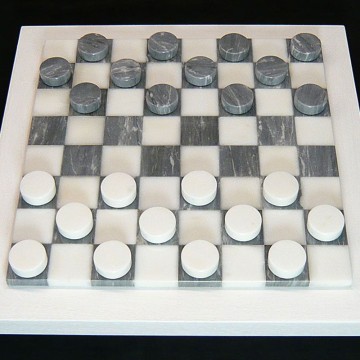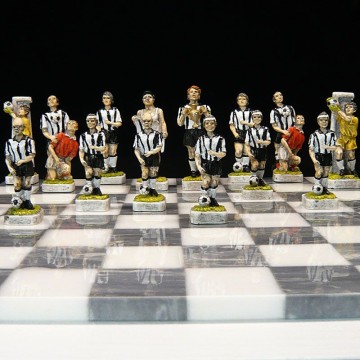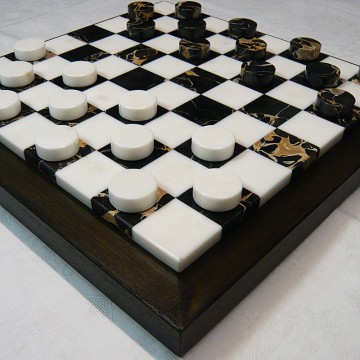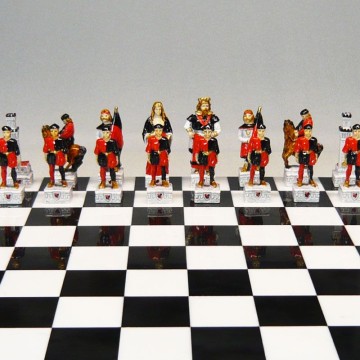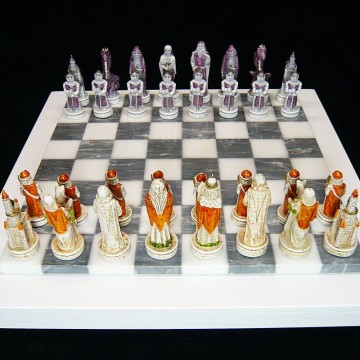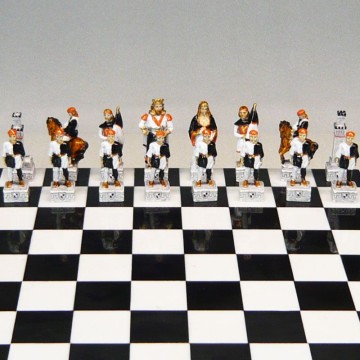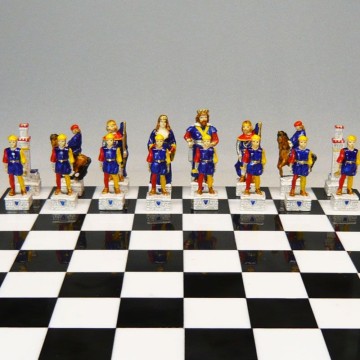Maritime Republics Chess "Pisa"
Reference: NSSCRMPi
Set of 32 pieces (16 + 16)
Artistic creation in recomposed marble, handmade and hand-painted by master craftsmen
Choose from the menu below the combination with the desired Maritime Republic
 Security policies
Security policies
Transactions on PayPal secure server
 Terms and Conditions
Terms and Conditions
Read our term and conditions
The raw material, marble dust from the quarries of Carrara, combined with the long experience of master craftsmen and highly professional designers, is what makes these artistic creations (statues, small animals, chess) unique: original and high level subjects to be proposed to fans and collectors.
The chess. Artistic creation composed by 32 pieces made with marble dust from the quarries of Carrara, aged and hand-painted with rich details by skilled masters of art.
They reproduce historical, art and fantasy figures, creating an extraordinary atmosphere that immerses players in a dense backdrop of realism.
Chess is a two-player strategy board game played on a checkered board with 64 squares arranged in an 8×8 square grid. Played by millions of people worldwide, chess is believed to be derived from the Indian game chaturanga sometime before the 7th century. Chaturanga is also the likely ancestor of the East Asian strategy games xianggi (Chinese chess), janggi (Korean chess), and shogi (Japanese chess). Chess reached Europe via Persia and Arabia by the 9th century, due to the Umayyad conquest of Hispania. The queen and bishop assumed their current powers in Spain in the late 15th century, and the modern rules were standardized in the 19th century.
Play involves no hidden information. Each player begins with 16 pieces: one king, one queen, two rooks, two knights, two bishops and eight pawns. Each piece type moves differently, with the most powerful being the queen and the least powerful the pawn. The objective is to checkmate the opponent's king by placing it under an inescapable threat of capture. To this end, a player's pieces are used to attack and capture the opponent's pieces, while supporting one another. During the game, play typically involves exchanging pieces for the opponent's similar pieces, and finding and engineering opportunities to trade advantageously or to get a better position. In addition to checkmate, a player wins the game if the opponent resigns, or in a timed game, runs out of time. There are also several ways a game can end in a draw.
The Maritime Republics (Italian: repubbliche marinare) of the Mediterranean Basin were thalassocratic city-state in Italy and Dalmatia during the Middle Ages. The best known among them were Venice, Genoa, Pisa and Amalfi.
From the 10th century, they built fleets of ships both for their own protection and to support extensive trade networks across the Mediterranean, giving them an essential role in reestablishing contacts between Europe, Asia and Africa, which had been interrupted during the early Middle Ages. These contacts were not only commercial, but also cultural and artistic. They also had an essential role in the Crusades.
The expression "Maritime Republics" refers to the Italian city-state, that since the Middle Ages enjoyed, thanks to its maritime activities, political autonomy and economic prosperity. The economic growth of Europe around the year 1000, together with the hazards of the mainland trading routes, made possible the development of major commercial routes along the Mediterranean coast. The growing independence acquired by some coastal cities gave them a leading role in this development. These cities, exposed to pirate raids (mostly Saracen), organized their own defence, providing themselves substantial war fleets. Thus, in the 10th and 11th centuries they were able to switch to an offensive stance, taking advantage of the rivalry between the Byzantine and Islamic maritime powers and competing with them for the control of commerce and trade routes with Asia and Africa.
Venice, Genoa and Pisa had dominion over different overseas lands, including many Mediterranean islands (especially Sardinia and Corsica), lands on the Adriatic, Aegean, and Black Sea (Crimea), and commercial colonies in the Near East and in North Africa. Venice stands out from the rest in that it maintained enormous tracts of land in Greece, Cyprus, Istria and Dalmatia until as late as the mid-17th century.
In 1016 an alliance of Pisa and Genoa defeated the Saracens, conquered Corsica and gained control of the Tyrrhenian Sea. A century later they freed the Balearic Islands in an expedition that was celebrated in the Gesta triumphalia per Pisanos and in the Liber Maiorichinus epic poem, composed in 1113–1115.
Pisa, at that time overlooking the sea at the mouth of the Arno, reached the pinnacle of its glory between the 12th and 13th centuries, when its ships controlled the Western Mediterranean. Rivalry between Pisa and Genoa grew worse in the 12th century and resulted in the naval Battle of Meloria (1284), which marked the beginning of Pisan decline; Pisa renounced all claim to Corsica and ceded part of Sardinia to Genoa in 1299. Moreover, the Aragonese conquest of Sardinia, which began in 1324, deprived the Tuscan city of dominion over the Giudicati of Cagliari and Gallura. Pisa maintained its independence and control of the Tuscan coast until 1409, when it was annexed by Florence.
Data sheet
- Code
- NSSCRMPi
- Size
- h. cm. 7,5 ~ 9,5 (every chess is made unique by little irregularities of shape and colour)





